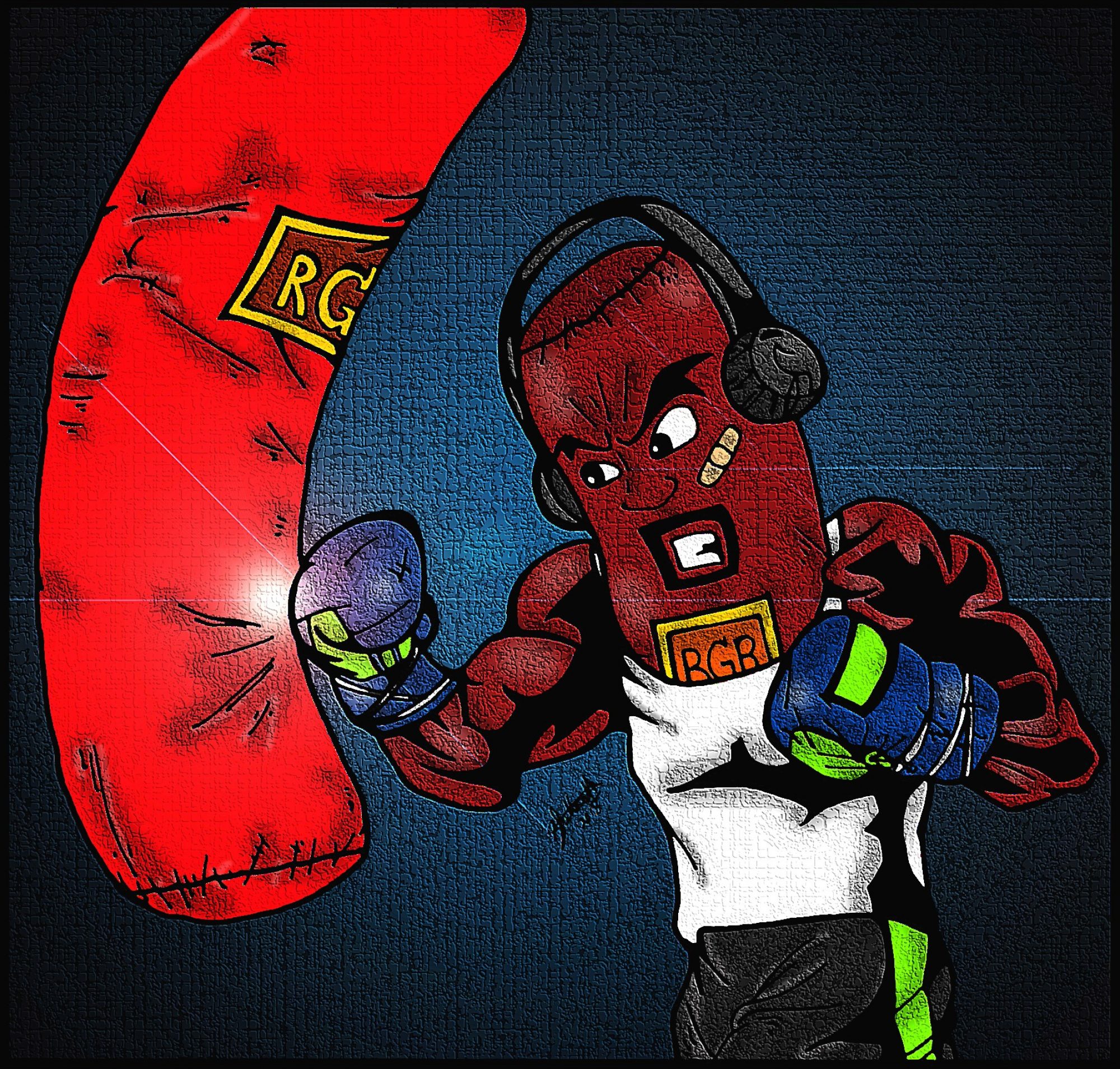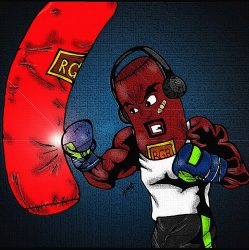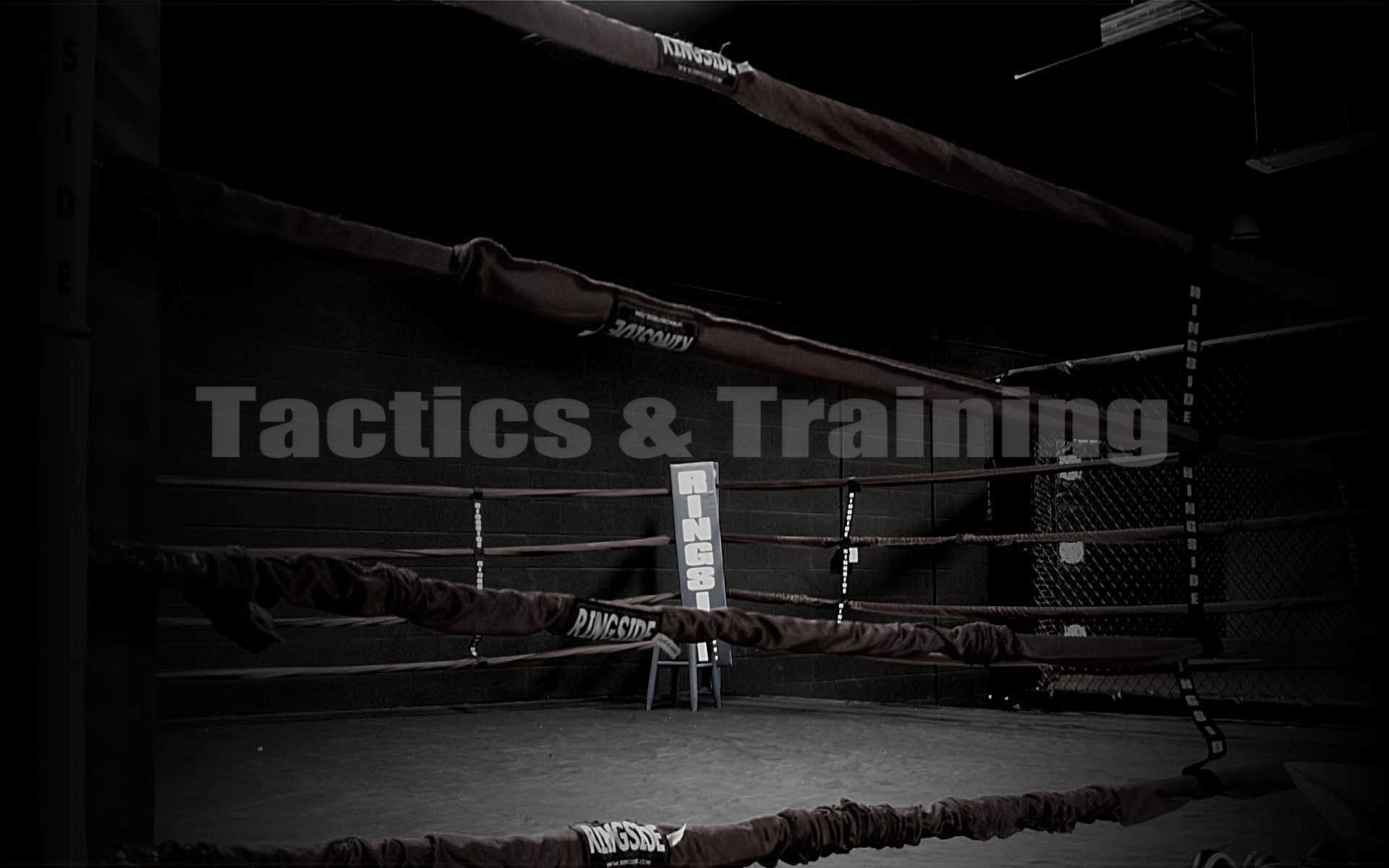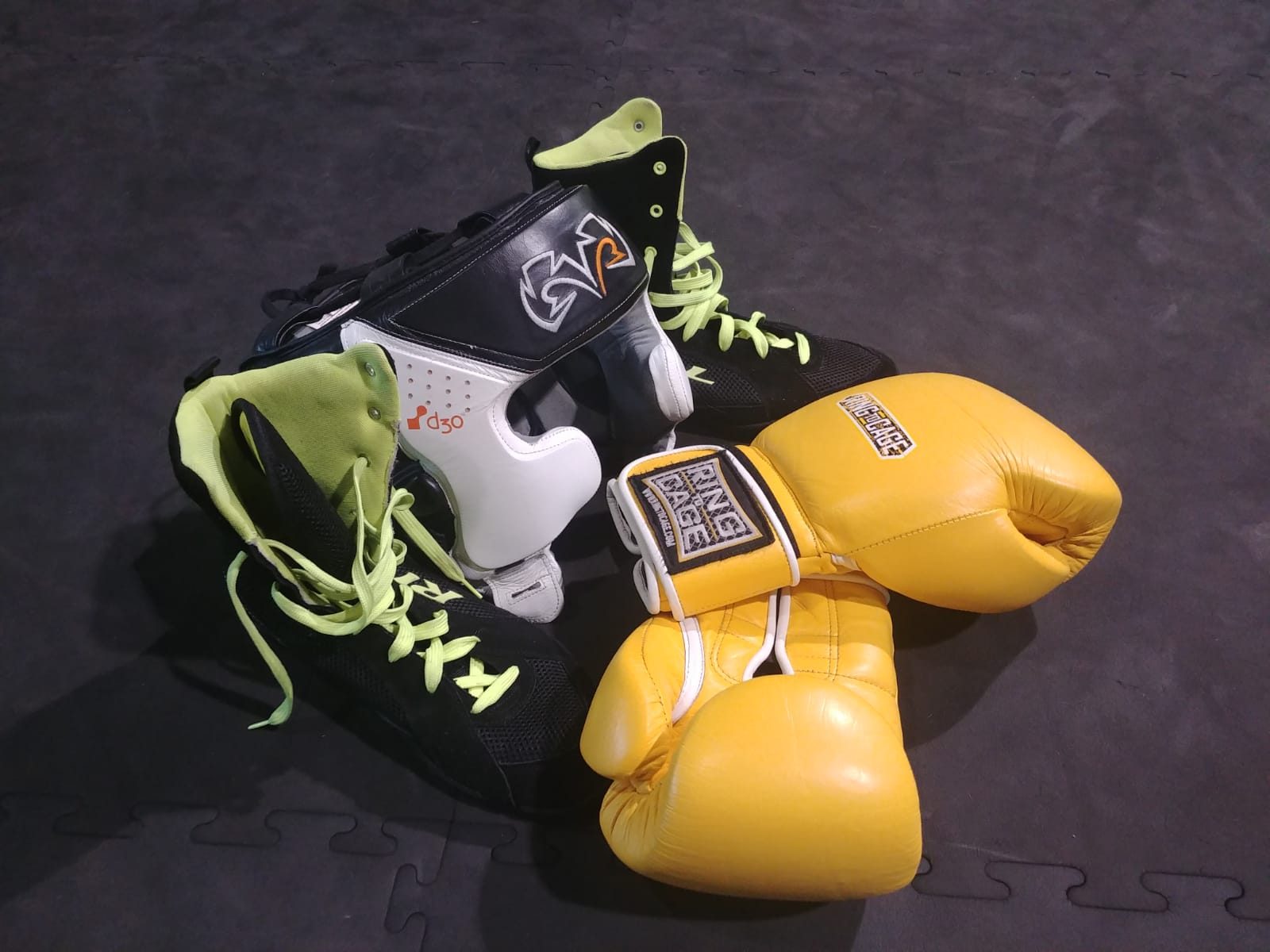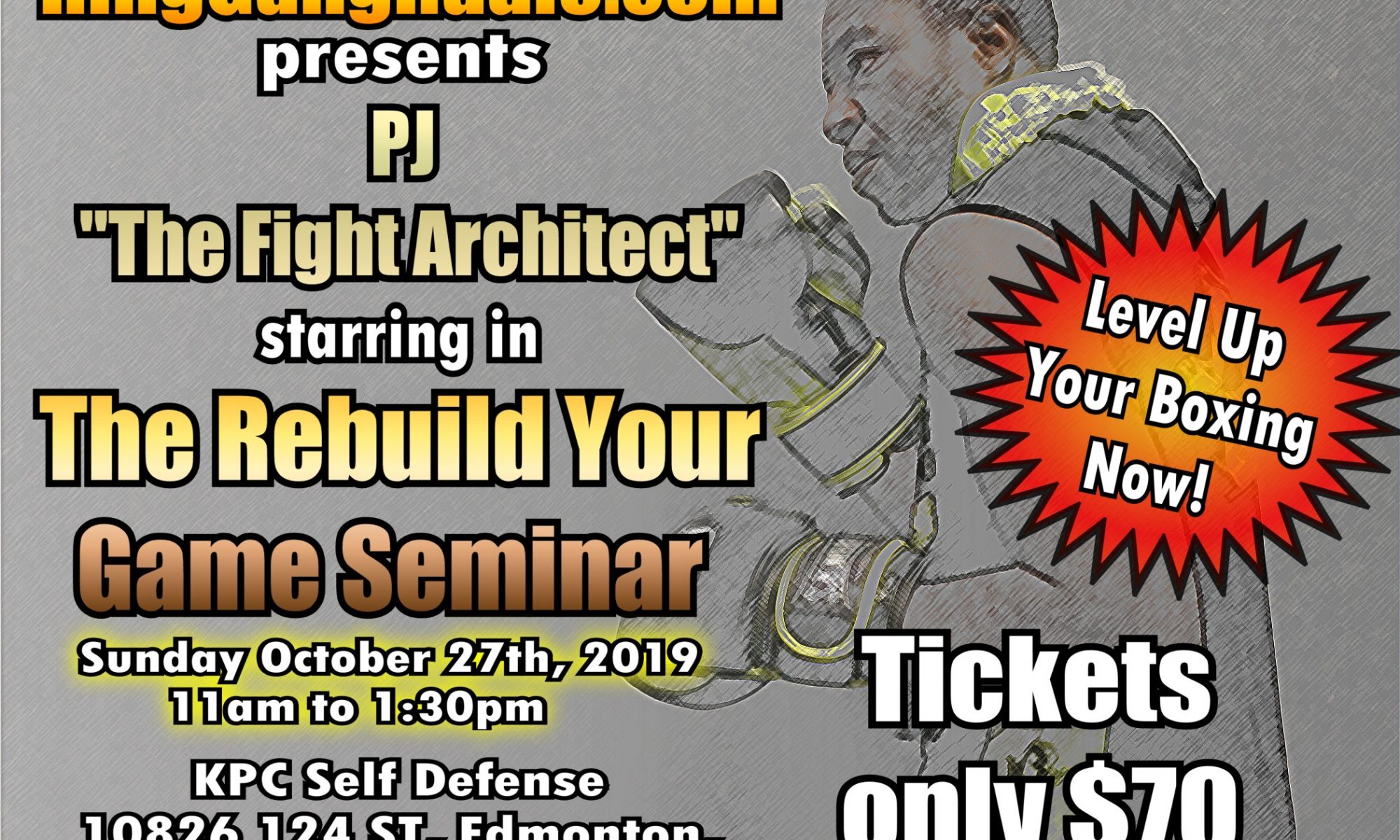RGR Boxing Training: Balance Mitts Drill
Training Tuesdays Week 5 Rolling and Countering Punches
Training Tuesdays Week 4 Slipping and Rolling Punches
Training Tuesdays Week 3 Pivots and Closing Distance
Training Tuesdays Week 2 Pivots for Ring Generalship
Training Tuesdays Week 1 Pivots and Distance
The Eyes in the Ring (Boxing Training)
What is seen to lead to making a call in the fight.
We have all experienced it, seeing a fight. Watching the moves and decisions made during the 12 rounds of a boxing match (5 rounds for MMA and Muay Thai title bouts or 3 for an amateur bout for all three sports). The judges call comes through a winner or a draw has been decided and people go back and forth on how one fighter won over the other.
People get heated, start explaining why what they saw was more valid than another or simply bring perspectives to make you want to rewatch the fight under more controlled circumstances (like no sound to ignore the crowd) possibly making one change their mind or strengthen their resolve.
While we all have had our opinions on how one fighter won over the other let’s consider some of the major factors happening during the bout.
Judge Criteria
Judges are looking for the following goals to be met by either fighter (this is in no particular order)
Effective Aggression
Ring Generalship
Defense
Clean Punches/Hard Punches
Seems straight forward enough, always remember though everyone is human you are bound to have some leaning or bias to a certain style or approach or in this case criteria over the other. The other thing to remember its a round by round basis so it makes thing murky if you cannot remember what happened (thus the scorecards to keep track)
Effective Aggression
The most interesting one, it is in essence the most simple. Who is forcing the fight? So it would be natural to think of the person moving forward. But then comes the Adjective before aggression, “effective”. What is effective aggression really?
Obviously to be in the fight you have to be in range of the fight so move towards the danger, that is one way to look at it. However recklessly rushing in may not be the wisest idea.
Risking eating something worse for being too eager to jump in.
Now it doesn’t mean you have to be cagey being excessively worried about catching something in return. The best counter punchers know they are going to get caught with something, it is how you can force the person to come back with what you want to get the blow you seek.
The person who throws first will usually have the exchange in their favor, the question is can they time it in their favor.
Ring Generalship
Another aspect, how the ring is used. This is where the fine line between moving and running gets blurred for a lot of people. There is nothing wrong with making space for yourself and if you see the shot coming, why not get out of the way? The question after that is are you able to fire back after the fact?
The most common scenario is when someone is cornered, you’re most likely going to do something defensively or offensively to get out of a corner to hopefully if paying attention get back to the center of the ring. Because if you wind back up in the corner or on the ropes you kind of have defeated the purpose or are looking to catch your breath.
Defensively or…..
Offensively
In combat sports controlling the center or having the majority of the ring space behind you is ideal, you have more mobility options than the other person. So you may see people dance around the ring to have someone walk aimlessly towards them like the David Haye vs Pulev fight or someone stalk their opponent to waste energy getting away to lead into a finish like Evander Holyfield vs Buster Douglas.
Defense
This is a mixed bag, in the end everyone loves watching someone evade punches. It’s just how and if they notice the defense happening. You want to protect yourself from punches but not be helpless while doing so. There is a good chance the referee will stop the fight due to no response coming back.
This also ties into the parts of defense some might find off putting saying things like someone is running or hugging too much, anyone who has gone past even 3 hard rounds knows that being able to tie someone up for even a few seconds of breath makes a huge difference.
We have talked before in other articles and videos on various guards and how they work, so lets touch on some key things most of the time is considered good defense.
- No clean shots landed
- This is based on where the judge can see you vs the person throwing at you, if they can’t see you. You’re not getting the nod
- Making the person miss
- While making someone miss by inches is great, it might still look like you got hit. Don’t take it to heart fighters, you got less lumps for it and that’s all that matters.
- If the person looks sloppy trying to land on you the scoring will generally fall in your favor, especially if a counter came from it
- What was done after the defense
- To roughly quote the late Roger Mayweather, “you don’t get points, blocking punches. You get points by punches landed” being able to avoid the shot is great. Making them pay adds the exclamation point even if it didn’t land clean it shows you have the answer ready and that is easier to notice
Clean/Hard Punches
This can also get a little murky, but then again what criteria doesn’t? But it falls to two things, did it land without it being blocked and did it hurt the person (be it off balance or a more visual reaction, like spaghetti legs)
I call this part the antithesis of that one aspect of defense, you can avoid a flurry but if you don’t answer the flurry. The one who flurried got that round in the bag, a good example is Sugar Ray Leonard vs Marvelous Marvin Hagler where Ray would flurry towards the end of a round to steal it.
or watch Gary Russel Jr.
Everything in the end falls into each other, meshing and melding into the approach of the fighter that night. Sometimes they may lean more into positioning. Other times they want to bring the fight to the person, just like judges we are all subject to some form of bias based on what we have seen before or like to see (remember highlight reels are just highlights not the fight itself) the crowd but we should consider that criteria when watching fights so we can have somewhere to begin the conversation of how each fight is favored.
As always, stay training, stay healthy and always remember to rebuild your game.
This article was written by PJ the Fight Architect who was inspired by the “A Tale of Two Fights” article written by Shutterworth back in November 28, 2018.
THE CENTER OF THE RING (Boxing Training)
If you’ve watched enough fights or been training a lot along with sparring and competition. You have probably heard the following statement or variations of it. “Hold the center of the ring” “Back to the center” “Stay off the ropes”
A great piece of advice but let’s dig further into what is affected when it comes to the center of the ring and why it is always sought for (or at least mentioned non stop by corners and commentators alike)
The most common reason of why the center of the ring is sought after in a basic sense is it gives the impression that you are the one in control of the ring making the opponent give ground and be forced to move around to find a way back in. When it comes to a basic idea of judging a fight “the one who backs off, appears to be losing” there is way more to unpack as it depends on effective aggression and what the person giving ground is doing.
However due to that basic idea it becomes very easy for a fighter to fall short on the judges score cards because all they saw was someone moving backwards. Which because of judges, another reason for people gunning for the center of the ring.
The judges can see you clearly
Here is a diagram of a ring, take note of where the judges sit
As you can see each judge’s view can become limited based on where the two fighters are going, where it becomes more of their best assessment of what is going on if someone is on the ropes or the corners vs the center of the ring where it is easier to see.
From this point of view you can see if it comes to clean hits. It’s 1 – 1 for both fighters. However going back to the diagram, one judge will be able to see what Canelo did in that position (Possibly 2 out of the 3 depending on which side of the ring they are on). For the other two judges, Golovkin has Canelo on the ropes and gets some shots in before backing off.
While there can be some benefits fighting off the ropes if you have the skillset, you have to make sure it shows that you came off the winner of that exchange.
Make them back off not wait for them to do so
Now we have an idea of what we are dealing with while in the ring, let’s see what is most likely to happen when both fighters are more determined to hold the center.
Most obvious is, exchanges are most likely to happen. Both of you are trying to be the one in control of the hill. So sparks will fly, a whole bunch of subtle strategies will come into play. How effective is your jab? How good is your defense? Can you get shots in while not paying the price? Are you able to use small steps to make the person over commit?
Also of course, there will be moments you lose the center. It becomes a case of how do you manage to lure the person into giving away the center so you can get back there forcing the positioning back to neutral? Losing the center does not necessarily kill your mobility options (unless you go straight into the ropes or corner) it just means you have to be a bit more precise and use subtle movement, effective aggression and defense to get it back.
This all expands further into so many other avenues when it comes to technique, setting up offense and defense which I will set aside for another time. This focus was just food for thought for the fighter, the trainer, the coach and the fight fans who watch two competitors put their skills to the test.
And as always keep training, keep studying fights and rebuild your game
Written by PJ the Fight Architect
ALTERNATIVES TO THE GYM (Boxing Training)
It is pretty obvious nowadays due to the pandemic access to certain luxuries or things taken for granted have now suddenly become limited if not completely closed entirely.
When the gym leaves you on “read”
With this new prospect of people working, communicating and collaborating remotely people are seeking solutions to being stuck at home and not gorging themselves on snacks without first burning the calories to earn it. We are now looking to simply doing workouts from home.
Seems simple enough but not necessarily for everyone. For some people loved the social aspect of the gym, hanging out with like minded people and motivating and encouraging each other to reach that eventual goal one day at a time. Having the coach there and ready to provide instruction on what to do and have a game plan to approach that goal, it’s quite a lot to lose so suddenly.
Let’s first take a look and see what is being done now because even the gyms need to make sure their clients are still receiving their money’s worth and not feel left in the dust.
FORMS OF COMMUNICATION
For the most part, we have access to phones and the internet. Calls, e-mails, texts, group chats are still available especially with how connected most people are to social media (whether they want to be or not).
Gyms are making content for their members to follow, as well as accommodating those who may not have certain items in their house but suggest to try and get them if possible.
Shadow boxing routine from Coach Aaron at Kingdom MMA and Fitness
Not only just gyms but various fighters and online trainers are providing little routines that are simple to follow and don’t require much. Just yourself and some space.
So trainers are doing their part. What can we the people at home do to get ourselves started and not get too lethargic while in lockup?
Stuck at home, an outgoing person’s worst nightmare
SPACE
Depending on where you live, space will be required to start your workouts. If we just focus on not having any gear whatsoever just simply for body weight exercises. Enough space to allow you to do push-ups, sit-ups, planks, squat thrusts and jumping jacks would be a good start (so about your height horizontally and vertically measured on the floor)
This will allow you to start basic workouts, no gear required. There are plenty of sources showing daily routines or challenges to follow for the month as you slowly learn the mechanics of your own body while building strength in the joints and smaller muscles that might get ignored when trying to use athleticism to blaze through.
You can work on how your strikes look and see if they are being done right
Record so you can see how you look and fix whatever is needed
Have focused drills on a specific combination or technique (don’t slack)
Do these during the rest in between sets
- Straight punches, shoe shine combinations as many as you can before the next set or at least for 15 – 30 seconds
Be more comfortable throwing your strikes in a controlled manner, so then you realize when you are overdoing something and learn to find out why.
SIMPLE GEAR TO GET STARTED
Now depending where you live, you are not the only one who has become “inspired” to make a home gym and you’ve noticed a lot of weights have disappeared from the shelves like toilet paper and hand sanitizer. Let’s make due with some gear that doesn’t break the bank while still maintaining small space available.
- Jump Rope
- The most basic and cheap alternative in case jumping jacks are getting boring, good cardio can be the equivalent of a run (I’d recommend going outside for a light jog or walk, get some fresh air while maintaining your distance)
- Medicine Ball
- This item has yet to disappear (50/50 chance), good for adding some variation to push-ups and sit-ups
- Kettle-Bell/Dumbbell
- Free weights to build strength if you want a bit more than simply body weight
- Yoga Mat
- In case you are concerned with sweating all over the place, having a towel nearby helps too
When more space is available to you, say like a basement or garage then more doors open based on your budget or who is willing to help you put stuff together.
Make due with what space you got whether it is a lot
Or Not
In the meantime the biggest hurdle for everyone is accountability, can you police yourself and maintain the discipline of keeping to a routine? Only you have the answer to that, the saying is it takes four weeks to turn something into a habit, let’s give it a shot.
Written by PJ the Fight Architect.
THE LIVER SHOT (Boxing Training)
The terriblethingtogethitbyohgodwhydoesthishurtsomuch punch
It is a punch seen in highlight reels for stoppages while not as immediate to see as a KO to the head.
Instead the body shot has a more subtle and in some cases more devastating ending depending on how well the punch landed.
Notice I said how well it landed and not how hard it landed, the accuracy is the key to the body shot as well as how it was hidden. It is a true example of the saying “the shot you can’t see hurts the most”; you don’t need much to hurt the liver, it’s an internal organ. That cannot be trained for impact.
It requires subtlety, setups and in mentally treating it like a sucker punch. You don’t want them to see it or at least react in time to brace for it. Which in turn means drill and drill and drill it until it becomes second nature.
So let’s say you got it down packed, you’re nice on the mitts and on the bag landing the liver shot. But for some reason it doesn’t seem to be effective in sparring let alone the fight
There could be a few things:
YOU’RE WORRIED ABOUT GETTING HIT
This is fair, you’re concerned of the risk of landing this shot due to being close to the opponent. However in this game, you’re never 100% safe from a counter. It’s better off to accept you’re going to eat a punch to land what you want.
Now I am not saying make your face your shield, just slowly get used to using your guard to pick off punches be it either high guard or half guard along with head movement to close in.
Now the most likely culprit of the body shot not landing….
YOU’RE BEING IMPATIENT
One of the most important things about body shots let alone the liver shot is, its accumulation. It’s rarely a one hit KO, it is an investment and you need to make multiple deposits to get dividends.
This means landing on the punches anywhere to get that liver shot available, you want the other person to lift their hands too high to defend their face. Be it a slip jab to the body.
Even when you get that shot in it probably won’t end it, you will have to dig in the trenches and make it rough for them
The other thing I mentioned before saying it is an investment, accumulation. If they are willing to keep standing. They’re going to be concerned about your body shots, allowing head shots to become available.
It becomes really difficult to throw back, move or even defend yourself if you can’t breathe. Most likely at that point the finish is yours to take….
So let’s be sure to mix the strikes up everyone, there is more than just the head. The body can lead to the magical headshot you seek.
Get to training and rebuild your game.
Written by PJ The Fight Architect
ANTICIPATION (Boxing Training)
For every action there is an equal and opposite reaction. It’s no different in the fight game. You try and land something they’re gonna attempt to fire back aka a counter. Act too samey they’ll punish it every time, almost to a fault……So why not give them something to bite to get a better boon? One thing to remember is sometimes the missed punch isn’t necessarily a wasted punch if you know what you’re doing with it. If you know the opponent is going to throw at you each time you act, maybe we can discourage them by countering the counter
One of the best at this is Guillermo Rigondeaux always showing punches as if he is shadow boxing in the fight, he will constantly show you a punch but not necessarily committing to it. Leaving a gamble of should you just look at it and get caught with something or get in and punish the little game?
If you’re able to tell that someone is ready to engage when they feel like you missed. It can set up other traps to force distance again.
When someone is constantly seeing the same starting punch, it primes one’s reflexes to always act on the potential threat be it offensively or defensively. They may even have the right counter in mind but not be prepared for what follows after due to focusing on that one moment.
We can even do this feigning “bad” technique leaving the jab out long enough to make someone feel confident to counter it with the right hand or a jab themselves.
When you practice your fundamentals, you learn how to use those little mistakes to create traps because in the end everyone uses the same punches/kicks, the technique in its most basic sense is the same including basic ideas on how to punish what appears to be poor technique
So get back to your training reassess what you have done and rebuild your game
Article Written by PJ the Fight Architect
Ring Gang Kombat (Mortal Kombat X inspired sparring)
Prolific Genius1 blessed us with this dope video game enhancement of Shutterworth and Rome sparring. Welcome to Ring Gang Kombat. The song playing is Doubleteam which is on the Tunnel Gang album Bars, Flows, and Soul. Out now on Spotify and all streaming platforms.
Boxing Training: More Light Sparring with Shutterworth and Rome
Shutterworth and Rome doing some light sparring for a couple of rounds. Background beat by Clanarchy
Boxing Training – How Holding Mitts Help You
Short clip from PJ the Fight Architect’s 1st seminar where he explains the importance of holding the mitts for other people.
Boxing Training – Having Right Hand Awareness
A clip from The Fight Architect PJ’s 1st seminar where he shows how to be aware of your right hand on offense and defense.
PJ ReBuild Your Game Seminar Promo
PJ The Fight Architect is here to rebuild your game. Oct 27th, 2019 Purchase tickets here. https://www.eventbrite.ca/e/fight-architect-rebuild-your-game-tickets-74327873671
Tools of the Game with PJ: Keeping Distance with Footwork.
In this short clip, PJ demonstrates keeping distance with footwork before adding the jab and Shutterworth keeps distance with footwork.
Training: Stretch Band Sparring
Shutterworth and Rome demonstrate the 3 Foot rule by sparring with a stretch leg band.
Boxing Training: The 3 Foot Rule
Shutterworth and Rome demonstrate the 3 foot rule in boxing in the 3rd episode of Ring Gang Radio training.
